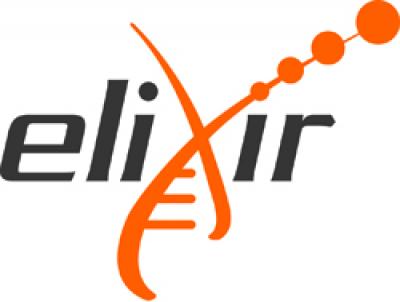PLAZI
Licence: Creative Commons Attribution Non Commercial Share Alike 4.0 International
Keywords: FAIR Data, Biodiversity, Bioinformatics tools, Taxonomy
Contributors: Valeria Di Cola, Julia Giora
Scientific topics: FAIR data, Biodiversity, Taxonomy, Bioinformatics
Status: Active
Target audience: Scientific community, science students
Learning objectives:
Introduction to PLAZI's workflow and to FAIR data concepts
• beginner 4 materialsThis module provides an overview of Plazi's workflow for the extraction, structuring, and dissemination of biodiversity data from scientific literature. Participants will be introduced to the core principles guiding Plazi's work, including the FAIR data concepts—Findable, Accessible, Interoperable, and Reusable—and how these are applied to enhance access to taxonomic information. The session aims to build a foundational understanding of the tools, processes, and goals behind Plazi’s mission to make scientific data openly available and machine-readable for global reuse and integration.
-
Learning pathway
FAIR Data and the Future of Publishing
 • beginnerBiodiversity Bioinformatics FAIR data Publications
• beginnerBiodiversity Bioinformatics FAIR data Publications -
lessons
Plazi Goals and Workflow
• beginnerBiodiversity Bioinformatics FAIR data Plazi Worflow FAIR Data Online Repository -
lessons
The main concepts - Understanding structure
• beginnerFAIR data Bioinformatics Biodiversity FAIR Data FAIR Data, Workflows, and Research Taxonomy Scientific publications -
lessons
Introduction to taxonomic concepts
•• intermediateTaxonomy Bioinformatics Taxonomic concepts FAIR Data
How to process and curate data through Plazi's workflow
•• intermediate 7 materialsThis module guides participants through the practical steps of processing and curating biodiversity data using Plazi’s workflow. It covers the use of tools such as GoldenGATE Imagine for semantic markup of taxonomic treatments, and details the standards applied to ensure data quality, interoperability, and compliance with FAIR principles. Participants will learn how to transform scientific publications into structured, machine-readable data, ready for integration into global biodiversity platforms such as TreatmentBank, GBIF, and the Biodiversity Literature Repository.
-
lessons
GoldenGate Imagine - Getting used to GGI and its tools and functions
•• intermediateFAIR data Bioinformatics Biodiversity Data mining GoldenGATE Imagine Data extraction Data publishing FAIR Data, Workflows, and Research -
lessons
Individual Extraction
••• advancedFAIR data Bioinformatics Biodiversity Data mining Data processing GoldenGATE Imagine Data extraction FAIR Data, Workflows, and Research -
lessons
Glossary - GGI
••• advancedFAIR data Bioinformatics Biodiversity Data mining Data processing GoldenGATE Imagine Data extraction FAIR Data, Workflows, and Research -
lessons
Individual Extraction – Guide
••• advancedFAIR data Bioinformatics Biodiversity Data mining Data processing GoldenGATE Imagine Data extraction FAIR Data, Workflows, and Research -
lessons
Enhancing Annotations
••• advancedFAIR data Bioinformatics Biodiversity Data curation and archival Data processing Data curation GoldenGATE Imagine Data extraction FAIR Data, Workflows, and Research -
lessons
Plazi: QC Tutorial
••• advancedFAIR data Bioinformatics Biodiversity Data curation and archival Data processing Data curation GoldenGATE Imagine Data extraction FAIR Data, Workflows, and Research -
lessons
Table Fixing - Quality Control
••• advancedFAIR data Bioinformatics Biodiversity Data curation and archival FAIR Data, Workflows, and Research Data processing GoldenGATE Imagine Data curation
Reusing Biodiversity Data: Access, Integration, and Application
•• intermediate 15 materialsThis module explores how biodiversity data processed through Plazi’s workflow can be accessed, integrated, and reused across multiple platforms. Participants will learn how to locate and retrieve data from open-access repositories such as GBIF, TreatmentBank, the Biodiversity Literature Repository, Ocellu, Synospecies, and BiodiversityPMC. The session highlights real-world applications of reused data in research, conservation, and policy-making, emphasizing how structured, FAIR-compliant information supports broader scientific and societal goals.
-
lessons
Data Reuse - Building knowledge from digital data repositories
• beginnerFAIR data Bioinformatics Biodiversity Data mining FAIR Data Data reuse Online Repository Open Data -
Presentation
Show Case: Data Liberation and Reuse - Atlas of Brazilian Snakes
•• intermediateFAIR data Bioinformatics Data visualisation Biodiversity Data mining Business Inteligence Herpetology FAIR Data, Workflows, and Research Online Repository -
lessons
Dashboards as showcases for FAIR collections
•• intermediateFAIR data Biodiversity Bioinformatics Data visualisation Data curation and archival Database management FAIR Data Dashboard Data Management Online Repository -
Presentation
TreatmentBank Presentation
•• intermediateFAIR data Bioinformatics Data mining Biodiversity Online Repository Data reuse FAIR Data Open Data -
Presentation
TreatmentBank Factsheet
•• intermediateFAIR data Bioinformatics Biodiversity Data mining Online Repository Data reuse FAIR Data Open Data -
lessons
Repositories and Statistics
••• advancedFAIR data Bioinformatics Biodiversity Data mining Online Repository Data reuse Data access management FAIR Data Open Data -
Presentation
Biodiversity Literature Repository - Presentation
FAIR data Bioinformatics Biodiversity Data mining Online Repository Zenodo Community Data reuse FAIR Data BLR -
Presentation
Biodiversity Literature Repository Factsheet
•• intermediateFAIR data Bioinformatics Biodiversity Data mining BLR Online Repository Zenodo Community Data reuse FAIR Data -
Presentation
eBioDiv Matching Service Factsheet
•• intermediateFAIR data Bioinformatics Biodiversity Data mining Materials Citation Global Biodiversity Information Facility TreatmentBank Scientific Collections Data reuse -
lessons
eBioDiv Matching Service - User's Tutorial
•• intermediateFAIR data Bioinformatics Biodiversity Data mining Materials Citation Global Biodiversity Information Facility TreatmentBank Scientific Collections Data reuse -
Presentation
eBioDiv Matching Service factsheet Video
•• intermediateFAIR data Bioinformatics Biodiversity Data mining Materials Citation Global Biodiversity Information Facility TreatmentBank Scientific Collections Data reuse -
Presentation
SynoSpecies - Explorer for taxonomic name synonymies and augmentations
•• intermediateFAIR data Bioinformatics Biodiversity Data mining Data reuse FAIR Data Online Repository TreatmentBank Taxonomy Synonimy -
Presentation
SynoSpecies Factsheet
•• intermediateFAIR data Bioinformatics Biodiversity Data mining Data reuse FAIR Data Online Repository Taxonomy Synonimy -
Presentation
BiodiversityPMC Factsheet
•• intermediateFAIR data Bioinformatics Biodiversity Data mining Data reuse FAIR Data Online Repository -
Presentation
Ocellus Factsheet
•• intermediateFAIR data Bioinformatics Biodiversity Data mining Data reuse Online Repository Image Data FAIR Data
Activity log
 Switzerland
Switzerland
